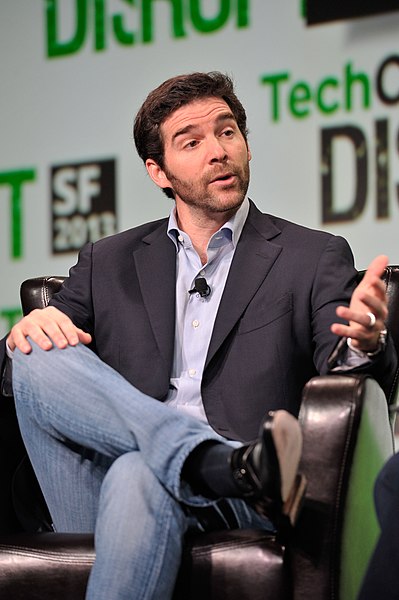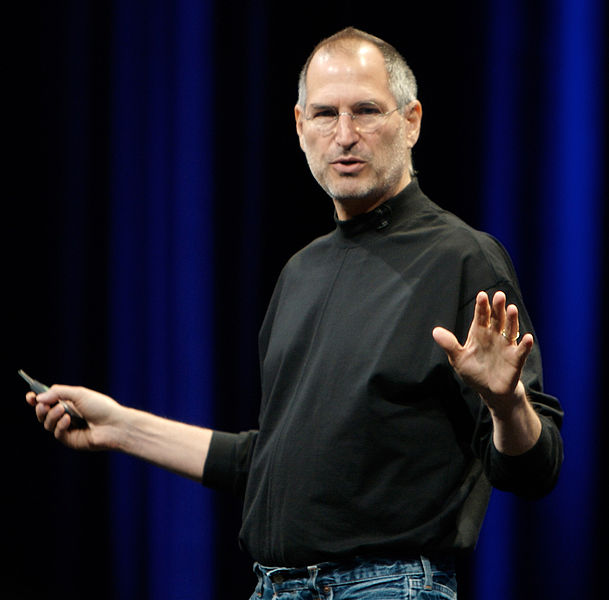Leading with Excellence: Unveiling P&G’s Timeless Leadership Legacy

A Tale of Leadership Excellence: The P&G Journey Begins
In the world of leadership development, where theories and models continually evolve, one enduring source of wisdom and inspiration lies in the annals of Proctor & Gamble (P&G), a titan in the consumer goods industry. Over the course of more than a century, P&G has not only delivered essential products into the homes of billions but has also etched an indelible mark in the realm of leadership. Through the years, the multinational corporation, with its roots dating back to the mid-19th century, has seen leaders rise and fall, challenges conquered, innovations pioneered, and values fortified. It is in the stories and lessons drawn from P&G’s illustrious history that we uncover profound insights into the art of leadership.
In this exploration, we embark on a journey through time, tracing the footsteps of the pioneers—William Proctor and James Gamble—whose vision laid the foundation for an empire built on the principles of integrity, innovation, and commitment. We delve into the leadership philosophy that has guided P&G’s ship through turbulent seas and calm waters alike, and we scrutinize the leadership qualities that have steered it toward unparalleled success.
But our voyage extends far beyond the origin story. We navigate through the waves of innovation and adaptability that have propelled P&G to the forefront of the consumer goods industry. We witness the company’s resilience as it faced trials and tribulations, observing how leadership met adversity head-on and emerged stronger.
Furthermore, we explore the facets of diversity and inclusion that have taken root within P&G’s corporate culture, understanding how the company’s leaders have recognized the power of diverse perspectives in driving progress. We unpack P&G’s commitment to sustainability and corporate responsibility, underscoring how these values have become integral to its identity under the guidance of its leaders.
As we sail through the seas of succession planning, we observe how P&G has skillfully cultivated the next generation of leaders, ensuring that the torch of leadership is passed seamlessly from one hand to another. We also venture into the global reach of P&G’s leadership, exploring the impact it has had on international markets and its role in fostering cultural sensitivity.
The story of Proctor & Gamble is not just a chronicle of a corporation; it is a tapestry interwoven with the threads of leadership, each strand representing a lesson learned, an obstacle overcome, and a triumph celebrated. As we set sail on this narrative odyssey, we invite you to embark with us on a journey that will unveil the timeless leadership lessons and captivating stories of Proctor & Gamble, lessons that transcend time and inspire leaders across industries and generations.

P&G: A Legacy of Leadership
Nestled in the annals of corporate history, Proctor & Gamble (P&G) stands as a testament to the enduring power of visionary leadership. Founded in 1837 by two enterprising immigrants, William Proctor, a candlemaker, and James Gamble, a soapmaker, the company emerged at the crossroads of necessity and innovation. What began as two disparate businesses united by matrimony – Proctor married Gamble’s sister – would eventually converge into a global conglomerate driven by an unwavering commitment to excellence.
A fundamental pillar of P&G’s enduring legacy is its unwavering dedication to quality, a principle that both founders passionately upheld. This commitment to delivering consistently high-quality products laid the cornerstone for P&G’s success, setting a precedent that would be upheld by its future leaders. This focus on quality was not just about business; it was a reflection of the founders’ character and integrity, principles that became deeply ingrained in the company’s DNA.
However, P&G’s journey to prominence wasn’t without its share of challenges. In its early days, it weathered economic downturns and fierce competition, mirroring the challenges faced by any startup striving for survival. But it was the resilience and resourcefulness of P&G’s leaders that allowed the company to overcome these obstacles. They navigated the choppy waters of business with unwavering determination and innovation. James Gamble, for instance, formulated an innovative method to manufacture high-quality soap consistently. This innovation not only ensured product excellence but also set the stage for P&G’s future reputation as an industry pioneer.
Throughout its history, P&G has exemplified another key leadership principle – adaptability. The company has shown an exceptional ability to evolve and stay relevant in a rapidly changing consumer landscape. This adaptability was evident in the company’s early shift from candles to soap during the candle industry’s decline. It was evident in P&G’s pioneering move into radio advertising in the 1920s, and later into television advertising, showcasing an uncanny ability to connect with consumers through emerging mediums.
One hallmark of P&G’s leadership is its foresight in recognizing that leadership itself is a continually evolving concept. While the company was founded on the principles of its two visionary founders, it didn’t remain stagnant. Each era of P&G leadership brought with it new insights, strategies, and perspectives, contributing to the company’s ongoing success. Whether it was the tenure of Neil McElroy, who coined the term “brand management” in the 1930s, or the contemporary leadership helmed by figures like David Taylor, P&G’s leaders have embraced change and innovation.
P&G’s legacy of leadership is a rich tapestry woven with the threads of resilience, innovation, adaptability, and a steadfast commitment to quality and integrity. It’s a testament to the enduring power of visionary leadership and serves as a beacon for leaders across industries, reminding them that the principles that guided Proctor & Gamble from its humble beginnings continue to illuminate the path to success in today’s dynamic business landscape. In the sections that follow, we will delve deeper into the leadership qualities and philosophies that have fueled P&G’s remarkable journey, offering valuable insights for aspiring leaders and leadership enthusiasts alike.
The Founders: William Proctor and James Gamble
To truly understand the essence of Proctor & Gamble’s enduring leadership legacy, one must first journey back to the company’s inception, where the destinies of two remarkable individuals intersected – William Proctor and James Gamble.
A Confluence of Expertise
William Proctor, a skilled candlemaker, and James Gamble, an accomplished soapmaker, found themselves in the bustling city of Cincinnati in the 1830s, both striving to make their mark in a rapidly industrializing America. Their union, through the marriage of two Gamble sisters, not only forged a familial connection but also marked the serendipitous convergence of their complementary skills. It was this fortuitous meeting of talents that would lay the foundation for one of the world’s most influential companies.
Leadership in Humble Beginnings
Both Proctor and Gamble exhibited essential leadership qualities from the outset. William Proctor, a diligent and resourceful entrepreneur, was known for his unwavering commitment to quality, a trait that would become synonymous with P&G’s brand identity. He recognized the importance of transparency and integrity in business, earning a reputation for reliability and trustworthiness – qualities that would resonate throughout the company’s history.
James Gamble, on the other hand, brought his innovative spirit to the partnership. His soapmaking expertise was matched only by his determination to refine and perfect his craft. It was this drive for continuous improvement that led to the development of an innovative soap production process. Gamble’s groundbreaking method not only revolutionized soap manufacturing but also set a precedent for P&G’s future commitment to innovation.
Leadership Beyond the Balance Sheet
Beyond their professional acumen, both founders embodied leadership qualities that transcended the realm of business. They were men of principle, guided by strong moral values. Their deep sense of duty extended to their employees, who were treated not as mere workers but as integral members of the P&G family. This early commitment to employee welfare and fair treatment was a reflection of Proctor and Gamble’s leadership philosophy, emphasizing the importance of people in driving success.
Legacy of Partnership
Perhaps one of the most profound leadership lessons from the founders is the power of collaboration. Their partnership was not just a merger of business interests but a testament to the idea that true leadership often emerges when individuals with diverse skills and perspectives come together with a common purpose. This synergy between Proctor and Gamble formed the bedrock upon which the P&G legacy would be built.
Throughout P&G’s journey, the influence of these two pioneers has remained palpable. The principles they instilled – quality, innovation, integrity, and a people-centric approach to leadership – continue to shape the company’s culture and values. As we journey deeper into the heart of P&G’s leadership legacy, we will encounter stories and insights that reveal how the torch of leadership was passed from these founders to the generations that followed, each adding their unique chapter to the company’s illustrious history. The spirit of Proctor and Gamble’s founders, with their unwavering commitment to excellence and innovation, continues to inspire leaders across industries, reminding us that enduring leadership is often born from the humblest of beginnings.
The P&G Leadership Philosophy
Proctor & Gamble’s (P&G) remarkable journey to becoming a global powerhouse in the consumer goods industry wasn’t merely a result of chance or circumstance. At its core lay a distinct leadership philosophy, a set of guiding principles and values that transcended generations of leaders. This philosophy served as the North Star, directing the company’s course through both calm waters and turbulent seas.
The Bedrock of Integrity
Central to P&G’s leadership philosophy is unwavering integrity. From its very inception, the company was built upon a foundation of trustworthiness and honesty. William Proctor and James Gamble set the precedent by conducting their businesses with transparency and a deep sense of ethical responsibility. This commitment to integrity would prove instrumental in shaping P&G’s reputation and endearing it to consumers worldwide.
Consumer-Centric Leadership
P&G’s leaders have long understood the importance of putting the consumer at the heart of every decision. This customer-centric approach is a defining feature of P&G’s leadership philosophy. Understanding consumer needs, preferences, and evolving trends has been a continual priority. P&G leaders have shown an exceptional ability to not only meet these demands but also anticipate them, driving product innovation and market leadership.
Innovation as a Guiding Light
Innovation is another cornerstone of P&G’s leadership philosophy. From James Gamble’s groundbreaking soap manufacturing process to the creation of product categories that became household staples, such as Tide and Crest, innovation has been woven into the fabric of P&G’s DNA. Leaders at P&G have embraced a culture that encourages curiosity and creative thinking, constantly seeking ways to improve products, processes, and customer experiences.
Leadership with a Human Touch
A distinct characteristic of P&G’s leadership philosophy is its emphasis on people. The founders’ belief in treating employees as family members set a precedent for a people-centric approach to leadership. Throughout its history, P&G has prioritized employee welfare, recognizing that a motivated and engaged workforce is essential for success. This commitment to people has not only fostered loyalty but has also fueled a culture of innovation and collaboration.
The Power of Values
Values have played a pivotal role in guiding P&G’s leaders. The company’s enduring commitment to diversity, equity, and inclusion, for example, is deeply rooted in its leadership philosophy. P&G’s leaders understand that fostering a diverse and inclusive environment not only aligns with its values but also drives innovation, creativity, and better decision-making.
Adaptability in the Face of Change
While P&G’s leadership philosophy has remained constant in many ways, its leaders have also recognized the importance of adaptability. They understand that the business landscape is ever-evolving, and success requires the flexibility to pivot when necessary. P&G’s leaders have embraced change and consistently demonstrated the agility to navigate new challenges and opportunities.
In essence, P&G’s leadership philosophy is a tapestry woven with the threads of integrity, consumer-centricity, innovation, a people-first mentality, and adaptability. It is a philosophy that has not only guided the company through more than a century of change but has also set an example for leaders across industries. As we delve deeper into the annals of P&G’s leadership history, we will discover how these guiding principles were embodied by its leaders and how they continue to illuminate the path to success in today’s dynamic business landscape.
Innovation and Adaptability: P&G’s Recipe for Leadership Success
One of the defining characteristics of Proctor & Gamble (P&G) as a leader in the consumer goods industry has been its unwavering commitment to innovation and its exceptional adaptability in navigating the ever-changing marketplace. In this section, we embark on a journey through the annals of P&G’s history to explore how these twin pillars—innovation and adaptability—have been instrumental in shaping the company’s leadership legacy.
Pioneering Product Innovation
From its early days, P&G displayed a keen sense of innovation that set it apart. James Gamble’s revolutionary soap manufacturing process was a testament to this spirit. This process not only ensured a consistent and high-quality product but also laid the foundation for P&G’s future innovation efforts. Leaders at P&G understood that staying at the forefront of the industry required a continuous commitment to improving and diversifying their product offerings.
Creating New Product Categories
P&G’s journey in leadership was marked by a willingness to venture beyond the status quo. This pioneering spirit led to the creation of entirely new product categories that became household names. For instance, the launch of Tide, the world’s first synthetic detergent, in 1946 revolutionized laundry care. Similarly, Crest, the first fluoride toothpaste, transformed oral hygiene practices. These innovations weren’t just about product development; they were about redefining industries.
Consumer-Centric Innovation
One of the keys to P&G’s success has been its unwavering focus on understanding and meeting consumer needs. P&G leaders recognized that innovation is most effective when it directly addresses consumer pain points. This consumer-centric approach led to products like Pampers, the world’s first disposable diaper, which transformed the lives of parents. P&G leaders have consistently listened to consumers, adapted to changing preferences, and delivered solutions that improve daily lives.
Embracing Emerging Technologies
P&G’s leadership is characterized by an open-mindedness toward emerging technologies. Leaders at P&G understood the potential of new tools and techniques, whether it was embracing radio and television advertising in the early 20th century or harnessing the power of digital marketing and e-commerce in the digital age. This willingness to adapt to new mediums and channels has allowed P&G to maintain its relevance in the modern era.
Adaptability in the Face of Challenges
P&G’s leadership philosophy also includes a remarkable adaptability in the face of challenges. The company has weathered numerous crises, from economic downturns to product recalls, and each time, its leaders have demonstrated resilience and an ability to learn from adversity. These experiences have made P&G more agile and better prepared to handle unexpected obstacles.
Innovation as a Cultural Norm
Perhaps the most enduring aspect of P&G’s leadership in innovation and adaptability is that they are not just strategies; they are part of the company’s culture. Innovation is not an occasional event but a continuous process ingrained in the mindset of every P&G employee. This cultural commitment to innovation has allowed P&G to sustain its leadership in an industry marked by rapid change.
In sum, P&G’s journey to leadership excellence is intrinsically linked to its culture of innovation and adaptability. From its humble beginnings with candles and soap to its current global dominance in consumer goods, P&G’s leaders have understood that to lead is to innovate and to adapt. As we progress further into P&G’s leadership narrative, we will witness how these principles were exemplified by the company’s leaders and how they continue to guide P&G toward a future filled with promise and opportunity.
Leading Through Challenges: P&G’s Resilience and Adaptable Leadership
Proctor & Gamble (P&G), with its rich history spanning over a century, has not only enjoyed the successes of a multinational corporation but has also weathered its fair share of challenges and adversities. In this section, we delve into the crucible moments of P&G’s history, examining how its leaders have exhibited remarkable resilience and adaptable leadership in the face of adversity.
The Great Depression and Economic Challenges
The onset of the Great Depression in the 1930s brought economic hardships to companies across industries, and P&G was no exception. The company faced declining sales and financial pressures. However, it was during these challenging times that P&G’s leadership, under the guidance of leaders like Neil McElroy, showed extraordinary adaptability. McElroy introduced the concept of “brand management,” a groundbreaking approach that revolutionized marketing and enabled P&G to regain its footing. This adaptability, which allowed P&G to pivot and thrive during economic turmoil, has been a hallmark of the company’s leadership legacy.
The Tylenol Poisoning Crisis
In the early 1980s, P&G faced one of the most high-profile crises in corporate history, the Tylenol poisoning incident. Even though Tylenol was a product of Johnson & Johnson, the crisis sent shockwaves throughout the consumer goods industry, affecting P&G and its leaders as well. P&G demonstrated solidarity with its competitor, recognizing that the industry as a whole needed to regain consumer trust. This adaptability and a focus on integrity in the face of crisis highlighted the values that were deeply ingrained in P&G’s leadership philosophy.
Environmental Sustainability Challenges
In the modern era, P&G faced growing pressure to address environmental sustainability concerns. As consumer attitudes shifted towards more eco-friendly products, P&G had to adapt. Under the leadership of figures like David Taylor, P&G committed to reducing its environmental footprint. The company embarked on sustainability initiatives, such as using renewable energy sources and reducing plastic waste. P&G leaders recognized that embracing sustainability was not only a moral imperative but also essential for long-term success in a changing world.
Navigating a Digital Transformation
The digital revolution presented another set of challenges for P&G’s leaders. As consumer behavior shifted towards e-commerce and digital marketing, P&G had to adapt its strategies. The company invested in digital capabilities and embraced data-driven decision-making. This adaptability to the digital landscape allowed P&G to remain competitive in an increasingly online marketplace.
Leadership Lessons from Challenges
The challenges faced by P&G offer valuable leadership lessons. They underscore the importance of adaptability, resilience, and values-driven decision-making. P&G leaders have consistently demonstrated that crises can be opportunities for growth and innovation. They have shown that enduring leadership requires the ability to pivot in the face of adversity and to uphold ethical principles even when faced with daunting challenges.
Through these challenges, P&G’s leaders have not only preserved the company’s legacy but have also reinforced its position as a beacon of leadership excellence. These stories of resilience and adaptable leadership serve as a testament to the enduring values and principles that continue to guide P&G’s leaders as they navigate the complex and ever-evolving landscape of the consumer goods industry. In the following sections, we will delve into other facets of P&G’s leadership journey, including its commitment to diversity and inclusion, sustainability, and succession planning.
Building a Diverse and Inclusive Culture: P&G’s Commitment to Leadership Excellence
In an era where diversity and inclusion have become fundamental aspects of corporate culture and leadership, Proctor & Gamble (P&G) has emerged as a trailblazer in championing these principles. This section delves into how P&G’s commitment to diversity and inclusion has not only strengthened its leadership but also contributed to its standing as a global leader in the consumer goods industry.
Foundations of Inclusion
P&G’s journey toward a diverse and inclusive culture can be traced back to its founders, William Proctor and James Gamble. Their values of fairness, integrity, and respect extended not only to employees but to all individuals, regardless of background. This early commitment to inclusivity was a defining characteristic of P&G’s leadership philosophy.
Early Efforts
P&G was one of the first major corporations to hire women in the late 19th century, recognizing the potential and contributions of women in the workforce. This progressive approach set a precedent for other companies and demonstrated that leadership is not confined to gender.
Diversity as a Competitive Advantage
P&G’s leaders understand that diversity is not just a matter of ethics; it’s a business imperative. A diverse workforce brings together varied perspectives, experiences, and talents, driving innovation and better decision-making. P&G’s commitment to diversity is reflected in its leadership ranks, where individuals from diverse backgrounds occupy key positions, ensuring that the company’s leadership team mirrors the diversity of its consumer base.
Inclusive Leadership Development
P&G’s leaders have established programs and initiatives aimed at developing diverse leadership talent. These programs identify high-potential individuals from underrepresented groups and provide them with the resources and mentorship needed to excel. This investment in leadership development ensures that P&G’s leadership pipeline remains diverse and vibrant.
Inclusive Branding and Marketing
P&G’s commitment to diversity extends to its advertising and branding efforts. The company has been a pioneer in featuring diverse voices and perspectives in its marketing campaigns, recognizing that representation matters. This approach not only resonates with consumers but also aligns with P&G’s values of inclusivity.
The Benefits of Inclusivity
P&G’s leadership understands that an inclusive culture fosters a sense of belonging among employees, which in turn leads to greater engagement and productivity. This commitment to inclusivity has also enhanced the company’s reputation, making it an attractive destination for top talent from diverse backgrounds.
In essence, P&G’s leadership excellence is deeply intertwined with its commitment to diversity and inclusion. The company’s leaders recognize that true leadership is not about conforming to a single mold but about embracing the richness of human diversity. As we explore further into P&G’s leadership journey, we will see how these principles have not only been ingrained in its culture but have also played a pivotal role in shaping its approach to sustainability and corporate responsibility. P&G’s commitment to inclusivity serves as a model for leaders across industries, illustrating that diversity isn’t just a checkbox but a driving force behind enduring leadership success.
Sustainability and Corporate Responsibility: P&G’s Leadership in a Changing World
In an era marked by growing environmental consciousness and social responsibility, Proctor & Gamble (P&G) has emerged as a leader in embracing sustainability and corporate responsibility as integral components of its leadership philosophy. This section explores how P&G’s commitment to these principles not only aligns with its leadership values but also positions it as a forward-thinking, responsible corporate entity.
The Evolution of Responsibility
P&G’s journey toward corporate responsibility can be traced back to its founders, William Proctor and James Gamble, who operated with a strong sense of ethics and social responsibility. Their commitment to integrity and fairness laid the foundation for a corporate culture that valued more than just profits.
Sustainable Innovation
P&G’s leaders have recognized that innovation and sustainability are not mutually exclusive. They understand that true leadership involves finding sustainable solutions that not only benefit the environment but also meet the evolving needs of consumers. P&G’s efforts in developing more sustainable products and packaging have not only reduced its environmental impact but also set industry standards.
Environmental Stewardship
P&G has embraced environmental stewardship as a core tenet of its leadership philosophy. The company has set ambitious sustainability goals, including commitments to reduce greenhouse gas emissions, water usage, and waste generation. Its leaders understand that sustainability isn’t just a moral obligation but also a strategic advantage in a world increasingly focused on environmental concerns.
Corporate Responsibility Beyond Compliance
P&G’s commitment to corporate responsibility extends beyond regulatory compliance. The company actively seeks opportunities to make a positive impact on society. Whether through philanthropic initiatives or partnerships with NGOs, P&G’s leaders understand that true leadership involves giving back to the communities they serve.
Consumer Engagement
P&G’s leadership recognizes the importance of engaging consumers in sustainability efforts. Through transparent labeling, educational campaigns, and initiatives that encourage responsible product use, P&G not only aligns its values with those of its consumers but also empowers them to make sustainable choices.
The Triple Bottom Line
P&G’s leaders understand that leadership isn’t just about financial success; it’s about achieving a triple bottom line: financial, environmental, and social. By focusing on these three pillars, P&G demonstrates a commitment to responsible leadership that takes into account the well-being of the planet and society as a whole.
In summary, P&G’s leadership in sustainability and corporate responsibility exemplifies a commitment to not only doing well but also doing good. The company’s leaders understand that true leadership goes beyond profit margins and stock prices—it involves creating a positive impact on the world. As we delve deeper into P&G’s leadership journey, we will see how these principles of responsibility and sustainability have not only enhanced its reputation but have also influenced its approach to leadership succession planning and its global impact. P&G’s commitment to a sustainable and responsible future serves as a model for leaders across industries, illustrating that leadership excellence is about leading with purpose and making a positive difference in the world.
Leadership Succession Planning: Nurturing the Leaders of Tomorrow
Proctor & Gamble (P&G) has not only excelled in its present leadership but has also been forward-thinking in grooming the leaders of tomorrow. This section takes us deep into the heart of P&G’s leadership succession planning, revealing how the company has meticulously cultivated leadership excellence through generations.
Foundations of Succession
P&G’s commitment to leadership excellence is evident in its succession planning strategies. The company’s founders, William Proctor and James Gamble, understood the importance of continuity in leadership. They recognized that true leadership transcends individuals and that nurturing future leaders is vital for long-term success.
Mentorship and Development
P&G has a rich tradition of mentorship and leadership development programs. These initiatives identify high-potential employees and provide them with opportunities for growth and learning. Seasoned leaders within the company take on mentorship roles, passing down their wisdom and experience to the next generation.
Leadership Training
P&G invests in comprehensive leadership training programs that equip emerging leaders with the skills and knowledge they need to succeed. This training extends beyond the technical aspects of business to include leadership skills such as communication, decision-making, and conflict resolution.
Global Perspective
P&G’s leadership succession planning is not limited by geographic boundaries. The company recognizes the importance of a global perspective in leadership and actively seeks to develop leaders from diverse backgrounds and locations. This global approach has allowed P&G to thrive in international markets and adapt to changing consumer dynamics.
Diversity in Leadership
P&G’s commitment to diversity and inclusion is mirrored in its leadership succession planning. The company actively seeks to ensure that its leadership pipeline reflects the diversity of its workforce and consumer base. This diversity of thought and perspective is a driving force behind P&G’s continued innovation and adaptability.
Succession in Action
P&G’s approach to leadership succession planning has borne fruit through numerous transitions. From the early days of William Cooper Proctor to the contemporary leadership under David Taylor, the company has witnessed seamless leadership transitions. Each generation of leaders has brought its unique strengths and perspectives, adding to the rich tapestry of P&G’s leadership legacy.
The Continuity of Values
Perhaps one of the most remarkable aspects of P&G’s leadership succession planning is the continuity of values. The company’s leaders, regardless of the era, have upheld the core principles of integrity, innovation, and consumer-centricity that were instilled by its founders. This unwavering commitment to values has been the bedrock upon which P&G’s enduring leadership excellence is built.
In essence, P&G’s leadership succession planning is a testament to the company’s foresight and dedication to enduring leadership excellence. It recognizes that leadership is not static but a continuum that extends across generations. As we journey further into P&G’s leadership narrative, we will witness how these principles of succession planning have contributed to the company’s global impact and how they remain central to its future endeavors. P&G’s commitment to nurturing the leaders of tomorrow is a model for leaders across industries, emphasizing that leadership excellence is about both the present and the legacy we leave for those who follow.
The Global Impact of P&G’s Leadership
Proctor & Gamble’s (P&G) leadership legacy extends far beyond its headquarters in Cincinnati, Ohio. It is a legacy that has reverberated across the globe, impacting consumers, employees, and markets in nearly every corner of the world. In this section, we explore the international reach of P&G’s leadership, unveiling stories of its global impact and how it has navigated the complexities of the global marketplace.
Global Expansion
From its earliest days, P&G displayed a global outlook. The company recognized the potential of international markets and ventured beyond U.S. borders. Its leaders understood that leadership isn’t confined to a single market; it requires adaptability and an appreciation for diverse cultures and consumer needs.
Local Relevance
P&G’s leadership philosophy emphasizes the importance of understanding and meeting local consumer needs. The company has adopted a decentralized approach, allowing local teams to tailor products and marketing strategies to specific markets. This adaptability has enabled P&G to build strong relationships with consumers around the world.
P&G’s Global Brands
Some of P&G’s most iconic brands, such as Pampers, Tide, and Gillette, have achieved global recognition. These brands are not just products; they are symbols of quality, innovation, and trust that transcend borders. P&G’s leadership in brand management has been instrumental in building and sustaining these global brands.
Cultural Sensitivity
P&G’s leaders recognize the importance of cultural sensitivity in global leadership. They understand that leadership excellence requires an appreciation for local customs, values, and traditions. P&G has a history of embracing diversity in its leadership ranks, ensuring that its global teams are equipped to navigate cultural nuances.
Sustainable Global Leadership
P&G’s commitment to sustainability extends to its global operations. The company’s leaders understand that responsible leadership includes reducing its environmental impact on a global scale. Initiatives such as responsible sourcing and renewable energy use demonstrate P&G’s dedication to environmental stewardship worldwide.
Local Community Engagement
P&G’s leadership extends to its engagement with local communities. The company actively participates in philanthropic efforts and community initiatives in the regions where it operates. This commitment to social responsibility underscores P&G’s belief that true leadership involves giving back to society.
Global Challenges
P&G has faced global challenges, from economic downturns in various countries to geopolitical complexities. Its leaders have demonstrated adaptability and resilience in navigating these challenges, often emerging stronger and more resilient on the global stage.
The Global Leadership Continuum
P&G’s leadership excellence isn’t confined to a specific era or location; it’s a global continuum. The principles of integrity, innovation, and adaptability that guided the company’s founders have continued to shape its leadership legacy across continents and generations.
As we journey further into P&G’s leadership narrative, we will uncover stories of leaders who have made a significant impact on international markets and how the company’s global perspective has influenced its approach to leadership development and sustainability. P&G’s global impact is a testament to the universality of leadership excellence, reminding us that true leadership knows no boundaries and that its principles can inspire and guide leaders around the world.
Lessons in Leadership Excellence from P&G’s Enduring Legacy
The story of Proctor & Gamble (P&G) is more than a corporate history; it is a narrative of leadership excellence that has left an indelible mark on the world of business. As we conclude our exploration of P&G’s leadership journey, we find ourselves standing at the intersection of the past and the present, gleaning profound lessons that resonate across industries and generations.
Legacy Beyond Profits
P&G’s leadership legacy teaches us that true leadership is not solely defined by financial success. While P&G has indeed achieved remarkable financial milestones, its legacy transcends balance sheets. It is a testament to the enduring power of values, ethics, and a commitment to principles that guide decisions beyond the pursuit of profit.
Integrity as the North Star
P&G’s founders, William Proctor and James Gamble, set a shining example of leadership anchored in integrity. Their unwavering commitment to honesty and transparency laid the foundation for a corporate culture that values trust above all else. P&G’s leaders understand that leadership excellence demands a steadfast adherence to ethical principles.
Innovation as a Lifeline
P&G’s journey is marked by relentless innovation. Its leaders have embraced innovation as not just a strategy but a way of life. They understand that leadership is about anticipating change, staying ahead of the curve, and continuously seeking better solutions. P&G’s commitment to innovation underscores that leadership excellence thrives on creative thinking and adaptability.
People-Centric Leadership
P&G’s leaders have demonstrated the transformative power of people-centric leadership. From treating employees as family members to fostering diversity and inclusion, they recognize that true leadership is about valuing and empowering individuals. P&G’s legacy teaches us that a motivated and engaged workforce is an essential component of leadership excellence.
Sustainability and Responsibility
P&G’s leadership legacy embraces sustainability and corporate responsibility as integral elements. The company understands that leadership excellence extends to making a positive impact on the environment and society. P&G’s commitment to sustainability reminds us that true leadership involves responsible stewardship of resources and a dedication to leaving a better world for future generations.
The Continuity of Values
P&G’s enduring leadership excellence is a testament to the continuity of values. These values, instilled by its founders, have been upheld by generations of leaders. They serve as a guiding light, illuminating the path to success and reminding us that leadership is not about short-term gains but the enduring impact we leave on the world.
As we close this chapter on P&G’s leadership journey, we are left with a profound appreciation for the timeless principles that have fueled its success. The lessons learned from P&G’s enduring legacy are not confined to the world of consumer goods; they are universal truths that resonate with leaders in every sector and era.
In the ever-evolving landscape of leadership, P&G’s legacy stands as a beacon, offering guidance and inspiration to those who aspire to lead with integrity, innovation, and a commitment to people and the planet. The story of P&G reminds us that leadership excellence is not a destination but a journey, one that is shaped by our values, our actions, and our unwavering dedication to making the world a better place through leadership that endures.






